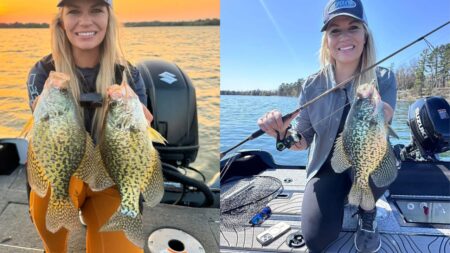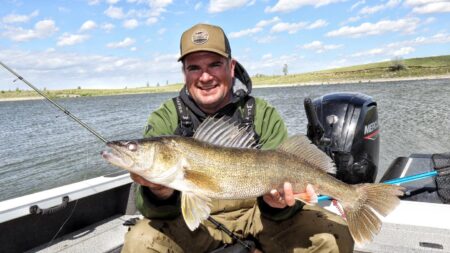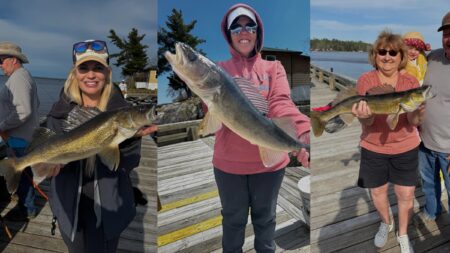Live bait rigging, or Lindy rigging, is perhaps the most effective system for fishing walleye ever developed. Yet, it comes with its own set of nuances that can be crucial for success. In this tip, long-time guide and tournament angler Toby Kvalevog breaks down live bait rigging, from crawlers to leeches and minnows.
Live bait rigging was designed to put fresh bait in front of bait in the most lively way possible while covering water. That means dragging away from the boat with simple components: a sinker, a swivel, a leader line, and a hook. Each bait category requires modified equipment with the same set of components.
Choosing weights:
The weight you use depends on the conditions. In shallow water or low wind, a lighter weight is desired to keep the bait from dragging on the bottom. Leeches, for example, require lighter weight to not impede their natural swimming action. Upsize your weight as you increase depth and wind speed. In clear water, you also want to get your presentation away from the boat, and controlling your weight can help you do that effectively.
Generally, 1/8oz is good for 6-8 feet of water, 1/4oz for 8-15 feet, 3/8oz for 15-20 feet, and 3/4oz for anything deeper than 20 feet.
Choosing Hooks:
A number 2 octopus hook is excellent for minnows and sometimes crawlers when dealing with larger walleye. A bigger hook means a bigger hook gap for the wide nose of creek chubs, for example. They are often thicker gauged, so they better hold on to big walleye, too. That being said, there is such a thing as too heavy of a hook, especially regarding leeches. Downsizing to a number 8 octopus hook, for example, helps keep the leech swimming naturally. Overall, a number 4 octopus hook is good for fishing with a crawler, but again, you can upsize when targeting larger fish. This is because you create the action more with a crawler by gently sweeping the road occasionally to compensate for the fact that worms don’t naturally swim in the water. Upsizing the hook with leeches leads to dragging and balling up the leech or collecting moss and debris on the bottom.
Choosing Line:
Your leader material choice depends on the bait. For crawlers and minnows, fluorocarbon is fine, but for leeches, you’ll want to switch to monofilament leaders. This is because minnows attract toothy critters like pike and tend to run closer to the bottom, where they’re more likely to run into the sharp edges of Zebra Mussels. Fluorocarbons’ abrasion-resistant properties limit break-offs from these hazards. You can and should also add air to the night crawler with a worm blower to keep them up off the bottom. Fluorocarbons’ downfall with leeches is that it sinks and drags leeches to the bottom and weighs them down. Kvalevog uses a 6-pound monofilament for leeches as it tends to float and keep the leech up and swimming naturally.
Choosing Speed:
Another way to keep your hair looking natural is to control your speed. Again, leeches should be allowed to swim freely by slowing your speed down to around .4mph on your GPS. Minnows can be run up to 1mph, but you should always pay attention to what you feel from your minnow on the end of the rod. If your minnow gets nervous and starts swimming harder and more frantically, that’s your cue to slow down, as a fish is likely approaching and making that minnow want to flee. For crawlers, .8-1mph is a good speed as you are actively imparting the action by slowly dragging or sweeping your road and letting it fall back on semi-tight line. This dragging motion creates spin, and when you stop, the air in the crawler floats up, provoking strikes from walleye in pursuit.
Equipment:
2500-3000 size spinning reels are excellent for live bait rigging as you often let a lot of line out. Kvalevog spools up 6-pound mono for all of his live bait applications. The light line again allows live bait to swim freely. A longer, lighter, tipped rod is preferred as you feel for both strikes and what your bait is doing down there. So, feel is a big deal when detecting a lively minnow, a spring crawler, a bound-up leech, or recognizing subtle bites.
This age-old tactic hasn’t stopped catching fish, but advancing technology and equipment have made it a very specific way of fishing. Take it from Toby Kvalevog, a live bait master with a lifetime of professional live bait fishing experience. These tips are truly the bread and butter when it comes to fishing live bait for walleye.



